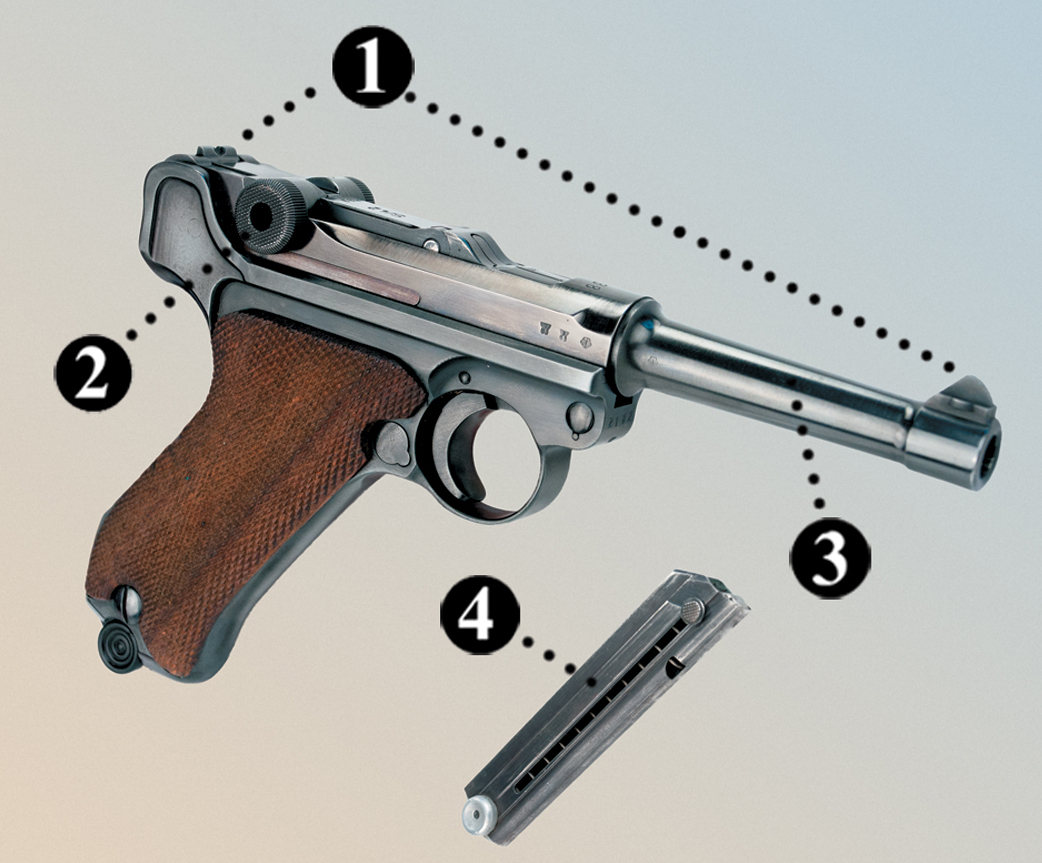
The Pistole 08 Luger is the most famous of some dozen versions of the 9mm Parabellum semiautomatic handgun designed for the German army between 1900 and 1923. Elegant, reliable, and accurate, it became a standard side arm for German officers during the two world wars. The heart of its action is a recoil-operated toggle joint. When the gun is fired, the barrel’s kickback pushes the jointed piece back until it breaks upward, ejecting the spent cartridge and compressing the recoil spring. The spring straightens the joint again, chambering a new round. Some 2.6 million Pistole 08s were made, although in 1942 the main producer, Mauser, switched to the new Walther P38.
Chris McNab’s latest book is A History of the World in 100 Weapons (Osprey).
[hr]
This article originally appeared in the Autumn 2012 issue (Vol. 25, No. 1) of MHQ—The Quarterly Journal of Military History with the headline: “These Hideous Weapons”
Want to have the lavishly illustrated, premium-quality print edition of MHQ delivered directly to you four times a year? Subscribe now at special savings!





